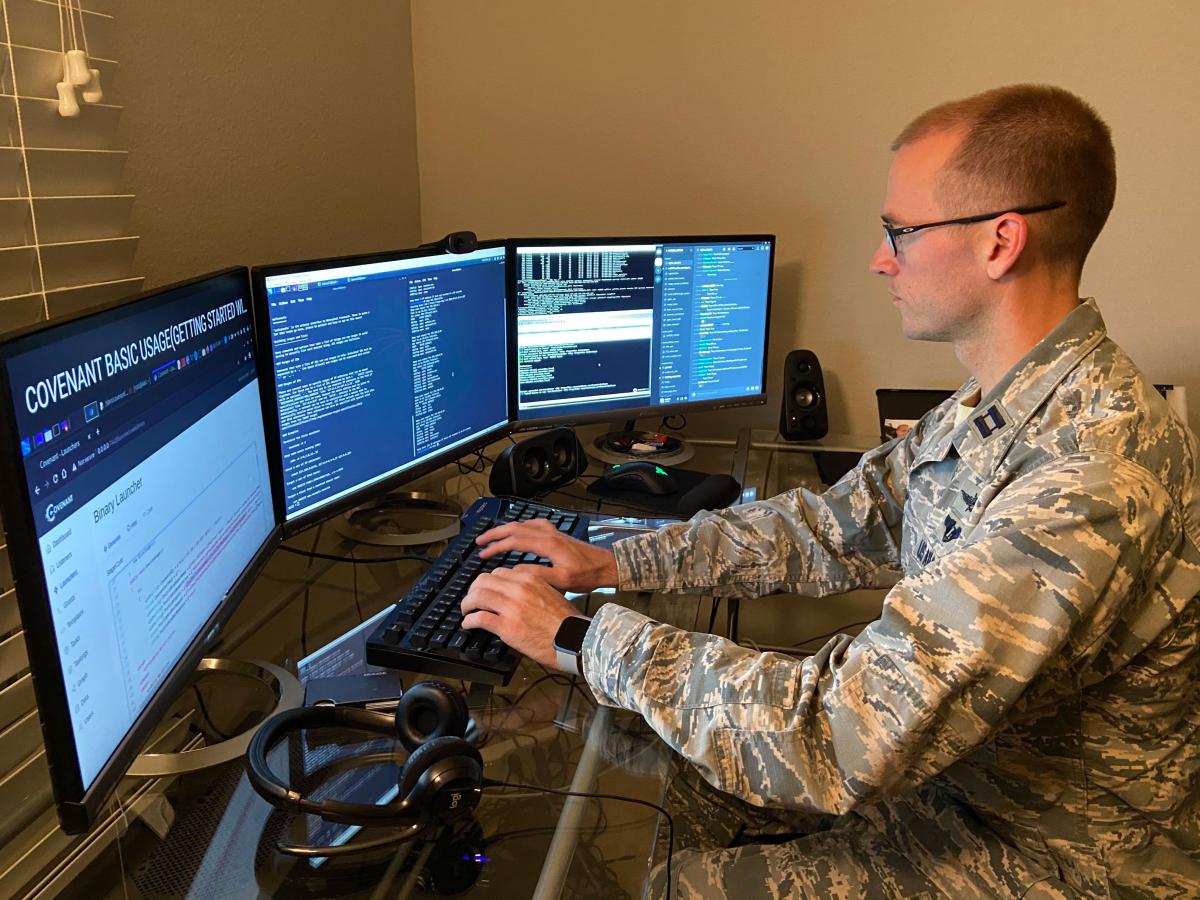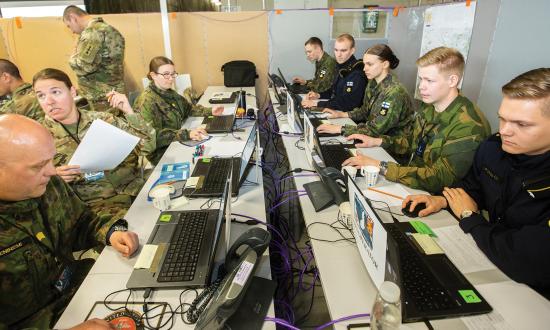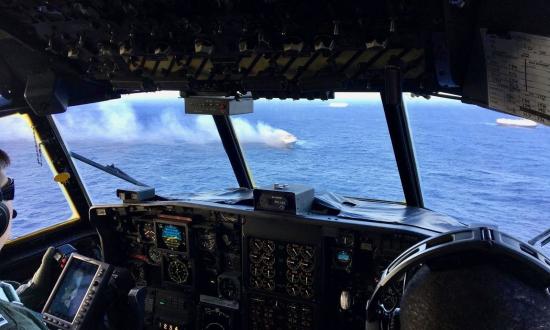On 20 December 2021, a top law firm announced all of its attorneys could “work from anywhere,” regardless of seniority. Earlier that year, the U.S. Army JAG Corps told a flock of rising attorneys the opposite: In-person work was the present and future of the Army JAG Corps.
This story is not an isolated incident. The U.S. military feels comfortable with the industrial work model—in-office work, five days a week for 40-plus hours. But COVID-19 upended this model, forcing the military to adopt telework (working from home near unit location), remote work (teleworking and residing somewhere other than the unit location), and distributed teams, as did many other companies in the world. Like the rest of the world, there are discussions on whether to keep these options after the pandemic ends. The military, like any organization, is vulnerable to fundamental human impulses: It seeks the known, the familiar. But the military cannot afford to make a familiarity-based decision here. It must embrace these changes. Here is why.
Telework and Remote Work Balance the Talent Management Competition
To revert to 100 percent in-person work would be a disaster for the U.S. military. The nature of the American workplace has evolved. Civilian companies—and even some jobs in the federal government—have adopted these new options for a significant number of employees. And the Great Resignation, a historically high workforce exodus totaling to more than 20 million people in recent months, is accelerating this change—people are seeking telework and remote work jobs at a higher percentage than ever before. This reality—coupled with sizable salary differences, a more balanced home life, consistent living situations, and professional flexibility—makes these other opportunities a threat to the military’s ability to recruit and retain talent. This is the 21st-century talent-management arms race in a nutshell—and the U.S. military will lose the recruitment and retention battle if it reverts to an antiquated model. Moreover, by eschewing telework, it will squander an opportunity to fortify the readiness of its current service members. But if the military sustains its new methods, it may defeat these outside forces.
Service members raising children—particularly women—provide the perfect example. About 8.5 percent of Marine Corps members are women, and the Corps loses a significant number of them at the end of their first enlistment/tour. Several factors contribute to female attrition in the ranks; however, a recurring theme was the lack of maternity time and a desire to spend more time with family. Sustaining these work options can help bridge the gap between unit responsibilities and family responsibilities. Although the military most likely will be unable to match the civilian standard for family leave of four to six months for primary caregivers and six to eight weeks for nonprimary, the ability to telework and work remotely would partially address this concern. Both options also would increase the financial security of many service members’ families by reducing the amount of daycare required during the workweek (age and situation-dependent). While the opportunity to save money is attractive, the flexibility to invest more time in family provides an intangible benefit that some service members find more significant than money.
The second- and third-order benefits from telework and remote work are endless: people can spend more time at home with their family; they can wake up and have breakfast with their kids and spouse; physical fitness can take place in their at-home gym, neighborhood gym, or however they please; and the time spent commuting evaporates, likely leading to more work time. And this change has financial benefits as well: Employees save between $2,500 and $4,000 per year when teleworking. In other words, both the quality of life and quality of work will increase. This new work model also will help identify self-starters in the force. Telework and remote work requires some degree of self-reliance. Individuals with fewer self-direction skills likely will struggle. Guidance and mentorship can help train these individuals to become self-starters, but for those who lack that drive, they will self-identify, lag in performance, and eventually self-select out of the organization. For those who want agency in their work-life blend and proactively steward the opportunity, telework or remote work is the proverbial cherry on top.
Telework and Remote Work Save the Government Money
Sustaining these options saves the government money. Government electricity bills would lower substantially if service members continued to telework or work remotely. Office space frees up when service members remote work, allowing the government to sell office space or, at least, stop purchasing real estate. As more individuals telework and remote work, local technology infrastructure can be reduced, saving costs on IT support and computer hardware. And service members’ usefulness also will increase: First, these methods also allow for services to continue work through disasters and base-shutdowns; second, telework and remote work decrease sidebar conversations in the office, leading to more productivity. To be sure, some say that these conversations add value to their groups. But these conversations are time thieves and are not the only sources of creativity and collaboration.
Telework and Remote Work Will Help Improve Military Decentralization
Some argue decreased in-person interactions will weaken trust within the military. And without this trust, the military’s primary mission—combat—will suffer. But do interactions build trust or does competency build trust? The latter seems more important. And this argument assumes that trust cannot grow through telework. Telework requires trusting your people to accomplish the mission without micromanaging. If peers, subordinates, and seniors all see mission accomplishment, trust grows in each individual and that unit. When in-person work such as a unit field exercise is contingent on the completion of key tasks, how a member has used telework becomes more apparent. The interdependent nature of telework and in-person work are like homework and a test—this relationship enhances accountability.
And geographic dispersion is the hallmark of the new battlefield. Commandant of the Marine Corps General David H. Berger recently developed Force Design 2030 and the littoral combat regiment philosophy, which is all about decentralized, consistently moving operations throughout the Pacific. Marines on the ground will have to act in a mostly autonomous, decentralized manner to get the job done and will have to work with teams and individuals who are hundreds or thousands of miles away on their computers. Shifting to telework and remote work will help make this type of decentralization more “culturally normal” to the Marine Corps and other branches. There’s a lot the military can develop in a teleworking culture that can improve its warfighting ability. Success in combat is the military’s primary purpose. Its methods should thus accelerate the adoption of and potentially increase the proficiency of the doctrine it believes will help achieve success in continually evolving and increasingly contested domains.
Telework and Remote Work Can Be Used in Almost Every Field
These options will not work with every military field or organization. The military, however, has already adopted these methods successfully, especially in supporting roles such as lawyers or data analysts. For some career fields, the military has deemed remote work unsuitable, overlooking key opportunities. Imagine the Marine infantry officer. Indeed, these Marines must be in the office or field to train their platoons for combat. But what about the plans for a field exercise, a legal issue, or mandatory computer-based training within the platoon? These situations could provide a service member a day or two to telework, allow him or her to help a little more at home, avoid the commute, and accomplish the mission.
Admittedly, telework poses practical limitations for a variety of career fields. Pilots, surgeons, and snipers need hands-on training in authentic, real-time settings. For these areas of work, many have posited that training and mission-oriented capabilities will atrophy or degrade when remote work is used. This argument, however, hinges on the notion that irreplaceable in-person training will decrease and simulation will supplant the real deal. Telework cannot be conflated with simulation; telework is another tool and must be judiciously matched to the appropriate tasks. Pilots, surgeons, and snipers (and myriad other career fields) still have administrative housekeeping to address, for which telework is the perfect tool.
Are there drawbacks to working from home? Do guidance and mentorship suffer for junior enlisted and officers? For both questions, yes. But flaws can be fixed, and the same critiques can be levied against in-person work. The military boasts about its ability to enable distributed leadership and execution based on intent rather than rely on detailed orders and closely monitored management. If true, it can sustain this model and capture the best of both worlds—in-person and remote.
Historically, the military has been an early adopter and harbinger of change—racial integration, inclusion of women, and private partnerships to incorporate best-in-class technologies have broadened our talent and the tools they use. Telework and remote work are not a necessary evil that complicates the industrial model; they are an affordable and efficient solution to talent management. And the military should keep them around.
The views expressed in this article are those of the authors and do not necessarily represent the views of the U.S. Marine Corps, U.S. Army, U.S. Air Force, Department of the Navy, Department of the Army, Department of the Air Force, Department of Defense, or the U.S. Government.






